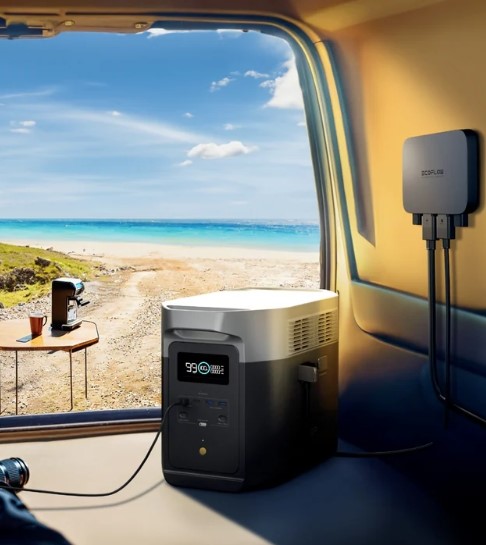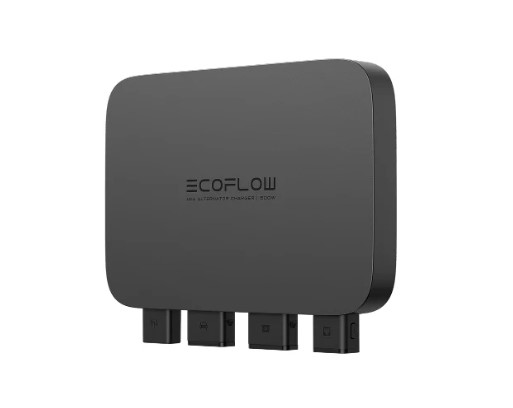Family camping trips create lasting memories, but they also require careful planning to keep everyone comfortable and safe. Unlike solo adventures, family outings need to power multiple devices simultaneously – from tablets that keep kids entertained to portable fridges that store meals and milk. Reliable power ensures phones stay charged for emergencies, cameras capture special moments, and lights illuminate the campsite after dark. In this article, we’ll explore the best power options to match different family camping needs and budgets.
Portable Power Stations: The All-in-One Camping Essential
Capacity & Output: Matching Your Family’s Device Needs
Choosing the right portable power station begins with understanding your family’s energy requirements. A small family using just phones and LED lights might manage with a 300Wh unit, while those running a camping fridge, multiple devices, and a small blender for smoothies should consider 1000Wh or more. Look for stations with multiple USB ports (including fast-charge options), AC outlets for small appliances, and 12V car-style sockets for camping accessories. The wattage rating determines what appliances you can run – most family camping needs fall between 500W to 2000W. Consider both the battery capacity (watt-hours) and output (watts) to ensure it can handle simultaneous charging of tablets while powering a mini-fridge.
Recharging Options
Versatile recharging makes portable power stations ideal for family camping. At home, fully charge the unit via wall outlets before departure – most need 6-8 hours for a complete charge. During travel, many stations recharge through 12V car outlets, adding about 10-20% capacity per hour of driving. Solar charging provides renewable energy at the campsite, with compatible panels adding 100-300Wh per sunny day depending on size. Smart families bring multiple charging options – a combination of solar for daytime and car charging when making supply runs. Some advanced models even accept dual inputs (solar + AC or solar + car) for faster replenishment. Always check charging times and input requirements to ensure compatibility with your planned power sources during the trip.

Solar Generators: Eco-Friendly Power for Longer Trips
How Solar Panels Work with Portable Stations
Solar generators combine portable power stations with solar panels to create sustainable camping power systems. The panels convert sunlight into DC electricity, which the station’s charge controller converts to the proper voltage for battery storage. For best results, position panels in direct sunlight at optimal angles, adjusting throughout the day as the sun moves. A 100W solar panel typically generates 300-500Wh daily in good conditions – enough to recharge phones and maintain a camping fridge. Families should match panel wattage to their power station’s input capacity; using undersized panels leads to slow charging, while oversized ones may waste potential unless the station accepts high input.
Best Solar Kits for Camping
Foldable solar panels offer excellent portability for family camping, collapsing to suitcase size for easy transport and storage. Their lightweight design makes them ideal for car camping families who move between sites. Rigid panels provide better durability and slightly higher efficiency but require careful packing to avoid damage. Look for kits with integrated stands for easy positioning and built-in charge controllers to prevent battery overcharging. Water-resistant models handle unexpected rain showers, while those with USB outputs can charge devices directly when the power station is full. For families with high energy needs, consider briefcase-style foldable panels in the 200-400W range that balance portability with serious charging capability.
Car Batteries & Jump Starters: Backup Power on the Go
Using Your Vehicle as a Power Source
Your family vehicle can serve as a supplemental power source when camping near parking areas. Standard 12V outlets (cigarette lighter ports) work well for charging phones and small devices but lack capacity for larger items. Power inverters convert your car’s DC power to AC, enabling use of small appliances – choose pure sine wave models for sensitive electronics like laptops. Always run the engine while drawing significant power to avoid draining the starter battery. Families using this method should monitor battery voltage and limit high-draw devices like electric coolers to periods when the engine runs.
Jump Starter Packs with USB Ports for Dual Use
Modern jump starter packs have evolved into versatile power solutions perfect for family camping safety. Many include USB ports for device charging, LED lights for emergencies, and sometimes even small compressors for inflating air mattresses. These compact units provide peace of mind for vehicle starting while serving as backup power for phones and tablets. Look for models with at least 10,000mAh capacity for meaningful device charging, and ensure they stay charged between trips. Some advanced versions feature wireless charging pads and AC outlets for greater versatility. While not a complete power solution, these belong in every family’s camping checklist as both a safety item and supplemental power source.
Conclusion
Reliable power transforms family camping from a survival challenge into an enjoyable outdoor experience. For comprehensive off-grid power, portable dual battery systems like the EcoFlow Dual battery system provide silent, fume-free energy with easy installation and fast charging capabilities. Whether you choose portable power stations, solar generators, or a combination of solutions, matching your power system to your family’s specific needs ensures everyone stays comfortable, connected, and safe throughout your outdoor adventures.











